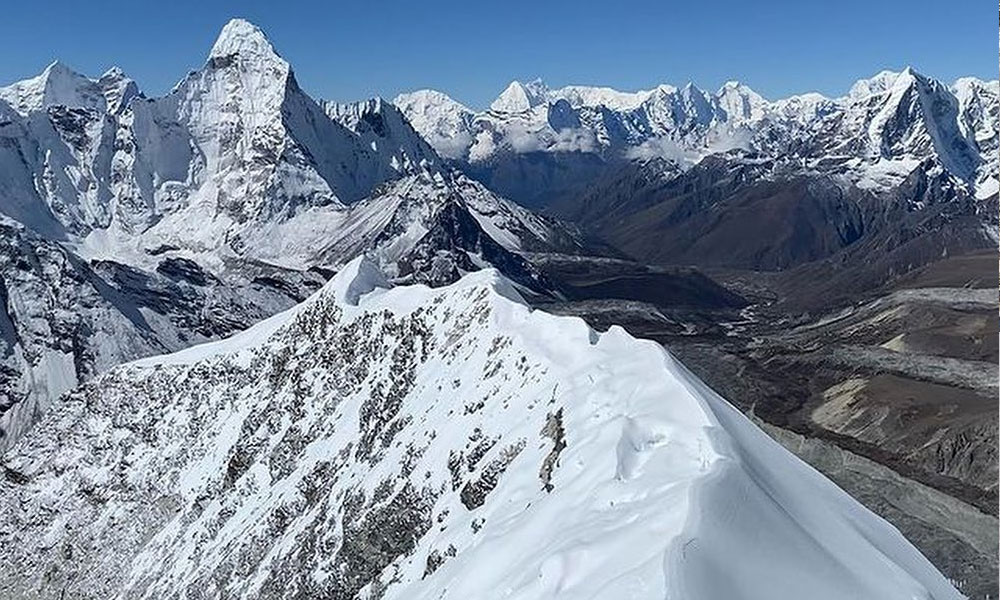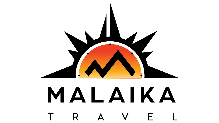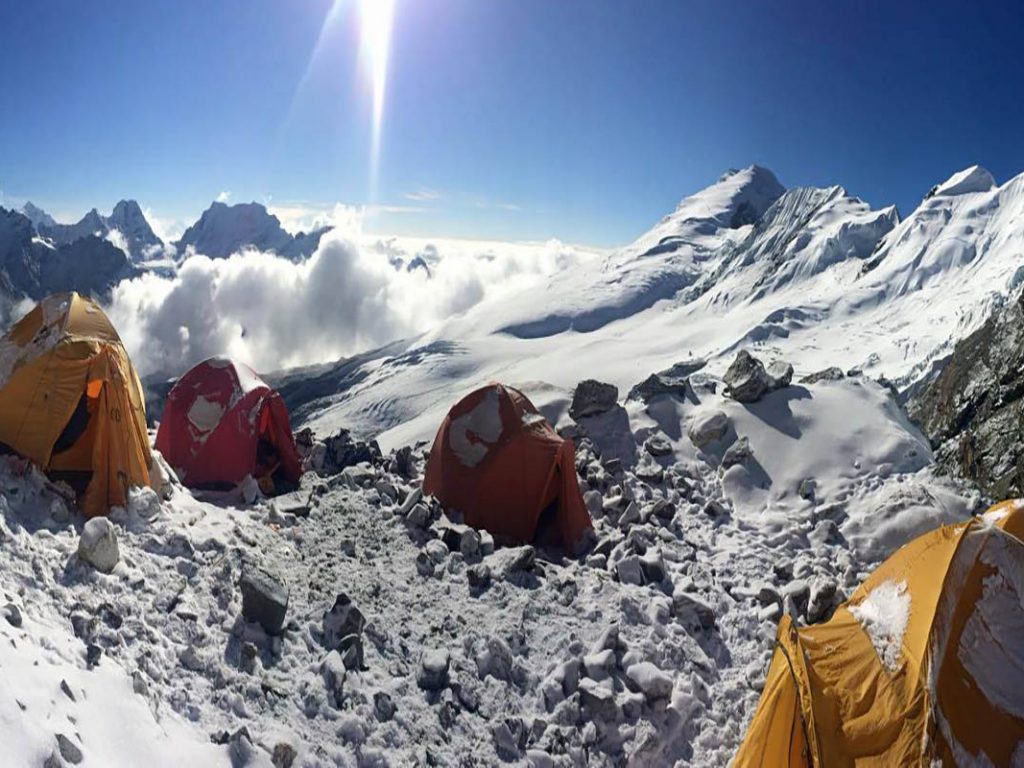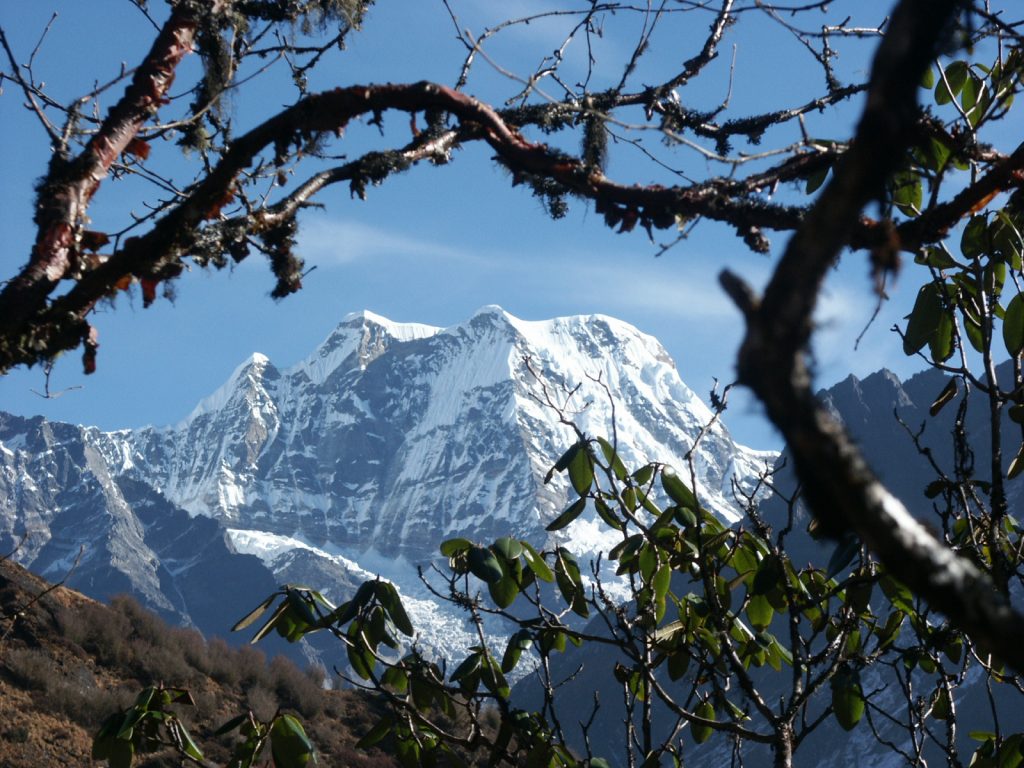
Mera Peak Expedition
Mera Peak Expedition
Overview
Mera Peak (6,461m) is an exciting, mesmerizing, panoramic and spectacular mountain that is popular among peak climbers. It is the highest trekking peak in Nepal located in the Everest Khumbu Valley. Climbing Mera Peak is a great opportunity for adventure seekers who want to see the stunning views of the Khumbu valley. Physical fitness and a sense of adventure are the qualities that you must have to accomplish the Mera Peak expedition. During the trip, you get to see breath-taking views of the mighty 8000m mountains such as Everest, Kanchenjunga, Makalu, Lhotse, Cho-Oyu and many other peaks.
The climb to Mera Peak is physically demanding, but it is not technically difficult. We have very carefully designed the Mera Peak itinerary to allow you to get gradual acclimatization. The walk initially goes through the wonderful and calm forest of the Hinku Valley which provides excellent acclimatization. Our professional services, quality equipment, good food, reliable trekking staff and your experienced leader will ensure that your Mera Peak trip will be an unforgettable adventure in Nepal.
NOTE: There are three parts of Mera Peak. North Mera Peak (6,476m), Central Mera Peak (6,461m) and South Mera Peak (6064m). We usually operate the expedition in Mera Central (6,461m) although the highest one is Mera North (6,476m). This is due to huge crevasses and glacial changes happening on the Mera North route. Despite the safety hazard, if you choose to do Mera North, we can take you there if you request it.
Day to day itinerary
Day 1: Arrive in Kathmandu (1400m/4593ft)
Upon arrival in Kathmandu, you will be greeted by a stunning view of snow-capped peaks and green hills stretching far into the horizon. Upon arrival at the airport, you will be greeted by one of our representatives. Look out for the sign with your name in bold. Our representative will take you to the hotel and help you check in. You can relax here. Later, if you feel like it, you can explore Thamel, which is a vibrant tourist hub. Overnight in Kathmandu.
Day 2: Kathmandu – Trip Preparation
You will be introduced to your climbing guide and rest of your team at the trip briefing. The briefing will be held in your hotel lobby. Your guide will discuss the route you will take and will let you know what each day is going to be like. He will also tell you about the important ‘dos and don’ts’ to be followed while trekking and climbing. After the briefing, there will be a gear and equipment check. The company will provide all of the group and personal climbing gear but if you want to bring or rent your own personal gear and equipment you can do so. However, it will be heavy and you may have to pay for extra baggage. If you want to rent your own climbing gear, you can do so at Khare. They offer high quality gear and equipment for you to hire. Please remember that climbing boots of size 12 and over are difficult to find in Nepal. If you have large feet (size 12 or greater) it would be practical to bring your own climbing boots.
Rest early today because you have a long day ahead of you tomorrow. O/N in Kathmandu.
Day 3: Fly from Kathmandu to Lukla (2840m/9318ft) – Trek to Paiya (2,730m/8,956ft) Flight Duration: 35 minutes. Walking Distance: approx. 7-8km, 5-6 hours
You’ll wake up early and drive to the airport. You take the flight to Lukla from where your Mera Peak adventure begins. The flight is filled with incredible views of the jagged Himalayan peaks. You can get your first glimpse of the eight thousanders from aboard. The Tenzing Hillary Airport in Lukla lies on a high mountain plateau, surrounded by steep hills. It is thrilling to fly between the mountains and land at the narrow and short runway. Once your plane lands, you sort out your luggage and meet the rest of the crew (porters & assistant guides). Lukla is known as the “Gateway to Everest” as most of the Everest treks and expeditions begin from this Sherpa settlement. You will walk past the colourful Lukla bazaar and head south to Paiya. We then descend down to Surkye where we stop for lunch. From Surkye, there is a steep ascent to Chutok La, a mountain pass. Another hour on this trail brings you to Paiya. O/N in Paiya.
Day 4: Trek from Paiya to Panggom (2846m/9337ft). Walking Distance: 6-7 hours
The trail meanders across traditional farms, terraced fields and lush jungles. You’ll cross a little wooden bridge over the Paiya Khola (a small stream). Then there’ll be a steep ascent to Khari La, a mountain pass. You’ll walk past a dense rhododendron and bamboo forest before reaching the small Sherpa settlement of Panggom. Along the way, you can enjoy amazing views of the Dudh Koshi Valley. O/N in Panggom.
Day 5: Trek from Panggom to Ramailo Danda (3276m/10748ft). Walking Distance: 5-6 hours
After breakfast, we will leave Panggom and begin walking towards Ramailo Danda via Ningsow. The trail goes up into a dense forest of rhododendron and bamboo to reach Pankongma La (3174m), another mountain pass. We will walk through the point that separates the Dudh Koshi River Valley and Hingku Valley. You’ll be able to enjoy inspiring views of Kongde, Manju Peak and Numbur Himal. We will get to the settlement of Ningsow, where we will stop for lunch. After lunch, we will take a trail to Ramailo Danda. “Ramailo’ means enjoyable or fun-filled and ‘Danda’ means hill in Nepali. From Ramailo Danda, you can enjoy the first view of Mera Peak and other peaks. O/N in Ramailo Danda.
Day 6: Trek Ramailo Danda to Chhatra Khola (2800m/9186ft). Walking Distance: 4-5 hours
Today’s trail goes through a dense jungle and the Makalu Barun National Park. As there are no teahouses on the way, we will carry a packed lunch. The park’s area extends up to the international border of Tibet. If you are lucky, you may come across a few of the park’s wild inhabitants such as red pandas, snow leopards, Himalayan Tahrs, musk deer, pale blue flycatchers, spiny babblers etc. Following the Pasang Lhamu trail (named after the first Nepalese female mountaineer to scale Mount Everest) we will make our way to Chhatra Khola. O/N in Chhatra Khola.
Day 7: Trek Chhatra Khola to Kothe (3691m/12109ft). Walking Distance: 6-7 hours
We will head north and walk beside the Majhang Khola (‘khola’ is river in Nepali). After crossing this river, we will take the trail alongside the Hinku Khola. We will reach a bridge which we will cross to reach the other side of the river. A few steps ahead lies Kothe, which is where we will stop for the night. O/N in Kothe.
Day 8: Trek Kothe to Thaknak (4358m/14297ft). Walking Distance: 3-4 hours
Today’s walk is filled with mesmerizing views of Mera Peak, Kusum Kanguru, Charpati Himal, and Thamserku. Leaving Kothe, we advance to the Upper Hinku valley. The vegetation becomes sparse and the forest disappears. Filled with kharkas (grazing camps of nomadic yak herders), this part of the valley has no major villages. After walking for some time, we will reach Gondishung, where we’ll stop for tea and refreshments. We also stop by the ancient 200-year old Lungsumgba Gompa, a Buddhist shrine. The shrine is sheltered by a huge rock. The crew burn incense or juniper and pray for good weather and a successful ascent to Mera Peak. An hour’s walk from here brings us to Thaknak, a summer camp used by yak herders. Charpati Himal lies very close and we can see the whole mountain, from the base to the summit. There are a couple of newly built teahouses offering food and shelter to trekkers and climbers heading to Mera Peak. O/N in Thaknak.
Day 9: Trek Thaknak to Khare (5045m/16486ft). Walking Distance: 2-3 hours
From Thaknak, you have a short hike to Khare. We will climb up the Dig Glacier and walk past the Charpati Tal- a glacial lake. You’ll walk down the Dig Glacier and then climb up to Dig Kharka. Here you’ll enjoy incredible views of the Kyeshar Glacier, Charpati Himal and Mera Peak. From Dig Kharka, a steep ascent through the Hinku Nup and Shar Glaciers brings you to Khare. Khare, which lies at the bottom of Mera Peak, is also known as the Mera Peak base camp. You will make your ascent up to Mera Peak from here. It has a few teahouses and climbing gear & equipment outlets. From here, you get a close-up view of the north face of Mera Peak. You’ll head to your teahouse and have lunch. After resting for a bit, you can explore the surrounding area. O/N in Khare.
Day 10: Khare – Acclimatisation Day & Pre-Climb Training
You will spend this day acclimatizing and receiving pre-climb training from your climbing guide. There will be a final gear and equipment check along with packing. If you wish to rent climbing gear, the rental outlets at Khare offer high quality gear and equipment for you to hire. You can get high quality climbing boots, ice axe, crampons, helmets etc. Remember that climbing boots of size 12 plus are difficult to find in Nepal. If you have large feet (size 12 or greater) it would be practical to bring your own climbing boots.
During the pre-climb training your guide will teach you the proper use of climbing equipment (ice axe, ascender, crampon, harness etc.) and basic techniques for scaling the peak. They will also share some tips on how you can keep yourself safe in the mountains. This training is important and valuable, especially if you are new to climbing. After the training, you can take a rest or explore the area. Right above Khare, there is a hill where you get good views of Mera La. O/N in Khare.
Day 11: Trek Khare to Mera High Camp (5780m/18958ft). Walking Distance: 5-6 hours
Leaving Khare, we will take a steep ascent through a rocky path to Mera La. All three summits of Mera Peak – Mera North (6476m), Mera Central (6461m) and Mera South (6065m) – are visible from the trail. Our goal is to reach the summit of Mera Central. Most commercial expeditions head up to this peak. We’ll walk up the Mera Glacier to get to Mera Peak high camp. There is no technical climbing involved. It is an easy trek with a gradual incline. The trek becomes strenuous and challenging because of the altitude and cold. We are walking in heights of above 5000 metres and every step comes with a struggle. Once we reach Mera High Camp, we will have hot drinks and soup. From the high camp, we get to enjoy stunning views of the five highest peaks in the world- Mount Everest (8848m), Kanchenjunga (8586m), Lhotse (8516m), Cho Oyu (8188m) and Makalu (8485m). We also get good views of Baruntse (7129m), Gaurishanker (7134m) and Chamlang (7319m). We will be sleeping in single tents (1 tent per climber). Rest early as we have an early start tomorrow. Camping at Mera High Camp.
Day 12: Mera High Camp to Summit (6461m/211907ft) – Trek to Khare (5045m/16547ft). Walking Distance: 10-12 hours
You’ll wake up at 2 AM and get ready for the summit push after breakfast. Put on your crampons and headlight and rope up. We will be secured by ‘man-ropes’. Walk in rhythm and follow your guide across the open glacier. It is a gradual climb; an uphill non-technical hike. While the terrain is easy, the only thing slowing us down will be the altitude and freezing cold. The air is thin and it is difficult. We can easily trek to the top of this mountain, only the last 40-50 metres to the summit is challenging. It is a steep incline and a fixed rope may be needed to climb to the snowy dome of the summit.
You will reach the summit of Mera Peak by 9 to 10am at the latest. You can enjoy stunning views of the five highest mountains in the world: Mount Everest (8848m), Kanchenjunga (8586m), Lhotse (8516m), Makalu (8481m) and Cho Oyu (8201m). You have done it! Savour this moment of achievement and capture the wonderful views by taking a photo. You’ll spend 5 to 10 minutes at the summit before heading down to the high camp. You can drink something hot (tea, coffee, soup) to warm yourself up. Later, you will have lunch, and then you’ll make a quick descent (2 to 3 hours) from Mera High Camp to Khare. This has been a tiring day. Once you reach the teahouse, you can celebrate your achievement and have some well-deserved rest. O/N in Khare.
Day 13: Contingency day for summit
An extra day for the summit in case our summit day (day 12) gets cancelled due to bad weather or ill health. This day can also be used for emergencies like a flight delay or any unforeseen event that may lead us to cancel a day during our trip. If everything goes as planned, you can use this extra day to go slower and explore some more places on the trail or you use this extra day for sightseeing in Kathmandu.
Day 14: Trek Khare to Kothe (3600m/11808ft). Walking Distance: 4-5 hours
From Khare, we will walk down a forested path to Kothe. There are no views of mountains as the trail is hidden by a dense overgrowth. We descend and reach Kothe in the Hinku Valley. O/N in Kothe.
Day 15: Trek Kothe to Thuli Kharka (4300m/14107ft). Walking Distance: 6-7 hours
We start off with a gradual ascent up through the valley to the western part of Hinku Valley. We walk along a forested trail. The trail goes up and down. A final ascent brings us to Thuli Kharka, our stop for the night. This is also a summer camp used by yak herders. Now, new lodges are being built to cater to the trekkers and climbers walking along this route. O/N in Thuli Kharka.
Day 16: Trek Thuli Kharka to Lukla (2840m/9318ft) via Zatrwa La Pass (4,600m/15,092ft). Walking Distance: 5-6 hours
This marks the final part of our Mera Peak climbing adventure. You’ll leave Thuli Kharka and make a steep ascent to Zatrwa La (4,600m), a high mountain pass. It takes almost 2 hours or more to reach the pass. The view from the pass is amazing and we can see a part of the trail that we passed earlier.
We can see the whole Lukla village, Numbur Himal, Dudh Kunda, Kongde, Khumbila and Hinku Valley. A steep descent brings us to Lukla. We will head to our teahouse and enjoy a hot shower. We can celebrate our last evening in the mountains with our crew. It will be a lively and memorable evening filled with Sherpa brew (chhyang), singing and dancing. O/N in Lukla.
Day 17: Fly Lukla to Kathmandu. Flight Duration: 35 minutes
Today you say goodbye to the Sherpa homeland and fly to Kathmandu. This is another interesting flight as the plane goes down Lukla airport’s narrow runway and starts flying right at the end of the cliff. It is a heart stopping take off. You’ll savour the views of the Himalayan Mountains for one last time. Upon reaching Kathmandu, you will be driven to your hotel. You can check in and have a well-deserved rest or you can go to your hotel’s spa and treat yourself to a post trek massage. If you haven’t had enough adventure yet, you can explore the city on your own or take a guided tour (ask us, we will be more than happy to help!). You’ll celebrate the completion of your trip with a farewell dinner. O/N in Kathmandu.
Day 18: Final Departure
You will be driven to the airport three hours before your scheduled departure. In case you wish to explore more of the Himalayas, let us know and we can arrange a trip for you to the destination of your choice.







